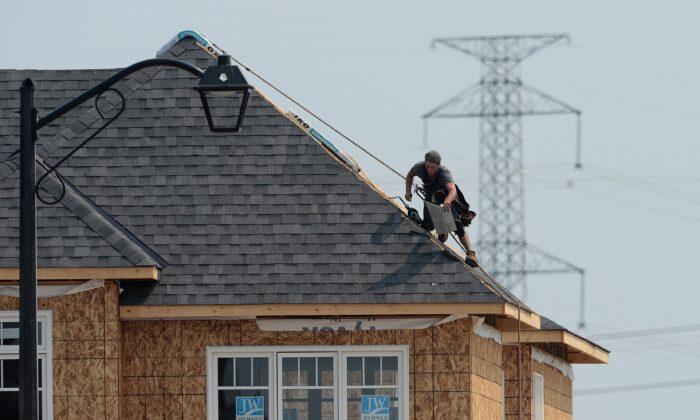The federal government’s housing strategy has only managed to finance the construction of some 106,000 homes since 2019, according to new government data.
An Inquiry of Minister presented in the House of Commons by Canada Mortgage and Housing Corporation (CMHC) provided data on the numbImmer of residential units that have been built through the strategy since the feds passed the National Housing Strategy Act, a law aimed to “support the progressive realization of the right to adequate housing.”
“The National Housing Strategy is Canada’s 10-year $82+ billion plan to give more Canadians a place to call home,” states the program’s website. The strategy is slated to run until March 2028. It includes $3.93 billion in federal funding for the construction, repair, and financial support of indigenous and northern housing, and $10.1 billion for housing for women and their children.
CMHC, Canada’s federal Crown corporation responsible for housing, indicated that 106,377 units have been built to date with formal funding under the National Housing Strategy, as reported by Blacklock’s Reporter on May 8.
In a Housing Market Information report titled “Housing Shortages in Canada: Solving the Affordability Crisis” released on June 23, 2022, CMHC projected that, based on the current rates of new construction, Canada’s housing stock will increase from about 16 million units in 2019 to just over 18 million units by 2030.
To restore affordability, the report said Canada will need an additional 3.53 million homes by 2030. This equals more than 440,000 new homes a year that would need to be built during that period, instead of the approximately 200,000 new homes a year based on CMHC estimates.
“To restore affordability, we need 3.5 million additional housing units beyond current projections,” said the report. “The size of the number should make all of us who form part of the housing market system realize we have a large task in front of us.”
Manitoba Conservative MP Marty Morantz requested the data. “With regard to the government’s National Housing Strategy, how many residential units constructed through the Strategy have been completed?” he asked.
“This figure does not represent the total number of homes built as it only encompasses those formally funded under the National Housing Strategy,” the response said.
The largest number of homes were built in Québec, a total 32,598 units, followed by Ontario (27,643 units), British Columbia (22,540 units), Alberta (6,917 units), Saskatchewan (4,085 units), Nova Scotia (4,066 units), Manitoba (3,125 units), Yukon (1,740 units), Prince Edward Island (1,131 units), New Brunswick (990), Newfoundland and Labrador (536), Nunavut (550) and the Northwest Territories (456).
‘Mismatch Between Supply and Demand’
In testimony before the Senate banking committee on March 3, 2022, the federal superintendent of financial institutions, Peter Routledge, said housing shortages were a serious issue, especially with increased immigration.
“I do worry about the structural mismatch between supply and demand in Canadian housing,” said Routledge.
“We have new Canadians arriving and young Canadians leaving home and creating households with about 250,000 households being formed every year in Canada,” said Routledge. “However we’re probably completing 200,000 to 210,000 houses every year.”
According to Routledge, “That is a structural mismatch that adds to price acceleration which can produce sudden price changes that can then lead to negative equity which is a very hard burden for folks to bear.”
He said it made it also harder for younger Canadians to enter the housing market.
Canada reached 431,645 new immigrants in 2022, setting a new record. The country is on track to have immigrants make up 30 percent of the population by 2036. In contrast, immigrants made up 20.7 percent of the population in 2011.
Last year’s record immigration beat the 2021 record, where the government allowed 405,000 new immigrants to enter the country. The last time Canada opened its doors to this level of immigrants was in 1913.
Immigration, Refugees and Citizenship Canada (IRCC) plans to let in some 1.45 million immigrants in the next three years, based on the annual Immigration Levels Plan tabled in Parliament.




